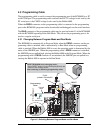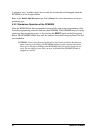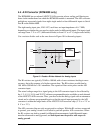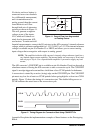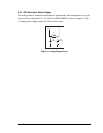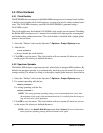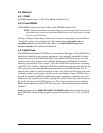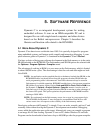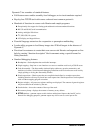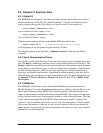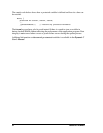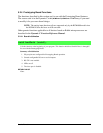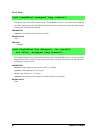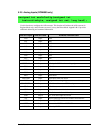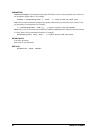
User’s Manual 41
5. SOFTWARE REFERENCE
Dynamic C is an integrated development system for writing
embedded software. It runs on an IBM-compatible PC and is
designed for use with single-board computers and other devices
based on the Rabbit microprocessor. Chapter 5 describes the
libraries and function calls related to the RCM4000.
5.1 More About Dynamic C
Dynamic C has been in use worldwide since 1989. It is specially designed for program-
ming embedded systems, and features quick compile and interactive debugging. A com-
plete reference guide to Dynamic C is contained in the Dynamic C User’s Manual.
You have a choice of doing your software development in the flash memory or in the static
SRAM included on the RCM4000. The flash memory and SRAM options are selected with
the Options > Program Options > Compiler menu.
The advantage of working in RAM is to save wear on the flash memory, which is limited
to about 100,000 write cycles. The disadvantage is that the code and data might not both
fit in RAM.
NOTE: An application can be compiled directly to the battery-backed data SRAM on the
RCM4000 module, but should be run from the program execution SRAM after the
serial programming cable is disconnected. Your final code must always be stored in
flash memory for reliable operation. RCM4000 modules have a fast program execution
SRAM that is not battery-backed. Select
Code and BIOS in Flash, Run in RAM from
the Dynamic C
Options > Project Options > Compiler menu to store the code in
flash and copy it to the fast program execution SRAM at run-time to take advantage of
the faster clock speed. This option optimizes the performance of RCM4000 modules
running at 58.98 MHz.
NOTE: Do not depend on the flash memory sector size or type in your program logic.
The RCM4000 and Dynamic C were designed to accommodate flash devices with
various sector sizes in response to the volatility of the flash-memory market.
Developing software with Dynamic C is simple. Users can write, compile, and test C and
assembly code without leaving the Dynamic C development environment. Debugging
occurs while the application runs on the target. Alternatively, users can compile a program
to an image file for later loading. Dynamic C runs on PCs under Windows 95 and later.
Programs can be downloaded at baud rates of up to 460,800 bps after the program compiles.



